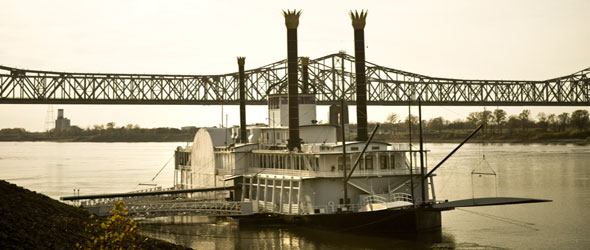River cruising is rising in popularity again but where did the trend start and which rivers led the way? Words: Rob Henderson.
It seemed a good idea at the time when the Nawab of Oudh, through whose territory the venerable Ganges made its way, ordered a steamboat for his own pleasure and those of his friends. Built in Lucknow in about 1817, the little boat (whose name is untraceable) weighed 19 tons and had an 8hp English engine. Little else is known of this historic river vessel, except the Nawab lost interest in her and she was left to rust away.
The historical importance of rivers as a means of transport and economic development has made them a natural source of cruising, long before the advent of ocean cruising. The flowing waters of history are images particularly associated with Egypt, which was described by Herodotus 1,400 years ago as “the gift of the Nile”.
RIVER NILE
From its headwaters in tropical Africa to the confluence of the White and Blue Niles at Khartoum, the river’s meandering has held travellers spellbound throughout history. In the early decades of the 19th century it was said of the English that they had a love of desolate places; journeying upriver in search of half-buried ruins in the timeless sands of Egypt became something of the extended ‘Grand Tour’.
These early travellers laid the foundations of Nile cruising in crafts such as the simple lateen-sailed feluccas or the larger cross-sailed native houseboats (dahabiya), which were specially fitted out and provisioned. Furthermore, they were ‘guaranteed’ to be free of any pestilence known to man and came with a native crew and experienced helmsman.
The usual mid-19th century cruise of the Nile was a 40-day Cairo-Luxor-Cairo journey for £110, which increased to £150 for an extension to Aswan. In 1870, the ubiquitous Thomas Cook was awarded the concession by Viceroy Ismail to manage the government steamers on the river up to the first cataract. This venture proved so successful that the Thomas Cook company invested in its own fleet of Nile steamers, “built in Scotland regardless of expense”.
EUROPEAN GRAND TOUR
In Europe, river systems such as the Rhine and the Danube were the principal means of travel for those on the Grand Tour. With the construction of the 20th-century Rhine-Main-Danube Canal, it is now possible for the modern traveller to take a river cruise from the North Sea to the Black Sea, along more than 2,000 miles of history. The dream of such a waterway had exercised the minds of sovereigns since Charlemagne in the 8th century to Ludwig I of Bavaria in the 19th century. In fact, Charlemagne had attempted early work on the project and Ludwig’s work was continued after his death, only to be interrupted by 20th-century conflicts.
Riverboats carrying passengers on excursions were prevalent on the Rhine in the early 1800s, and popularised by the Marquis and Countess of Londonderry, who made the journey in the 1840s and wrote the book A Steam Voyage to Constantinople. They never failed to extol their rank and once irked, remained so. However, their travels on the Rhine and Danube give some insight into the early days of river cruising in Europe.
MISSISSIPPI SHOWBOATS
Huckleberry Finn knew a thing or two about river cruising, even though it was on a raft; after all, Huck’s creator, Mark Twain, was a fully qualified Mississippi steamboat captain. Like the Nile, the Mississippi was a nation-building river and became a training ground for early steam navigation by the pioneering Robert Fulton, who launched New Orleans in 1811. Before long, boats of up to 500 tons were trading on the Mississippi, carrying up to 100 passengers in addition to cargo.
The Mississippi is synonymous with a particular style of riverboat due mainly to the shallowness of the waters. Either side- or stern-wheeled, the two- or three-deck superstructure containing cabins and spectacular public rooms, were set on a long wide hull form with minimal depth. Overly decorated with sumptuous interiors they lived up to the name of ‘showboat,’ and attracted a wide following.
RANGOON TO MANDALAY
A company in Burma, which at one stage had up to 600 ships, claimed to have carried 10 million passengers in a year and was known to have the ‘greatest river fleet on earth’. The Irrawaddy Flotilla Company was eulogised by Kipling with the line, “Can’t you ’ear their paddles chunkin’ from Rangoon to Mandalay?”
Founded in 1865, the company’s heyday was in the languishing summers of the British Empire yet it remained a magnet for seasoned travellers until the advent of World War II. Passengers could experience the Irrawaddy as it meandered through villages, paddy fields and teak forests to the sounds of innumerable temple bells, while taking tiffin on the upper deck – a thoroughly indulgent journey that is becoming increasingly popular again today.








